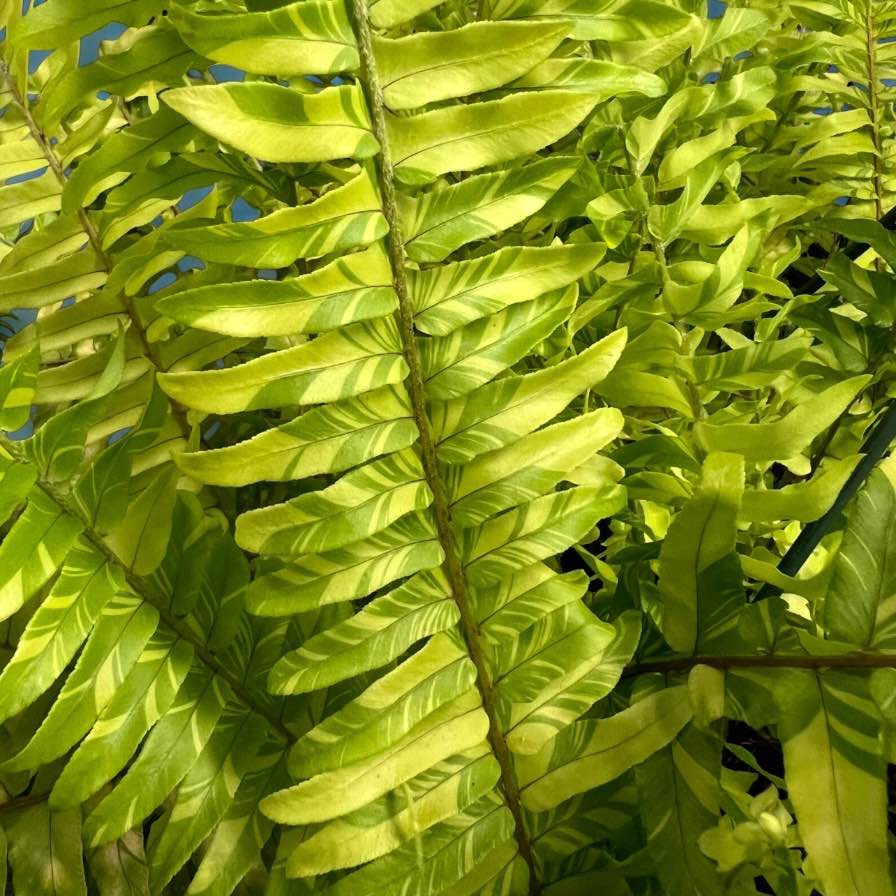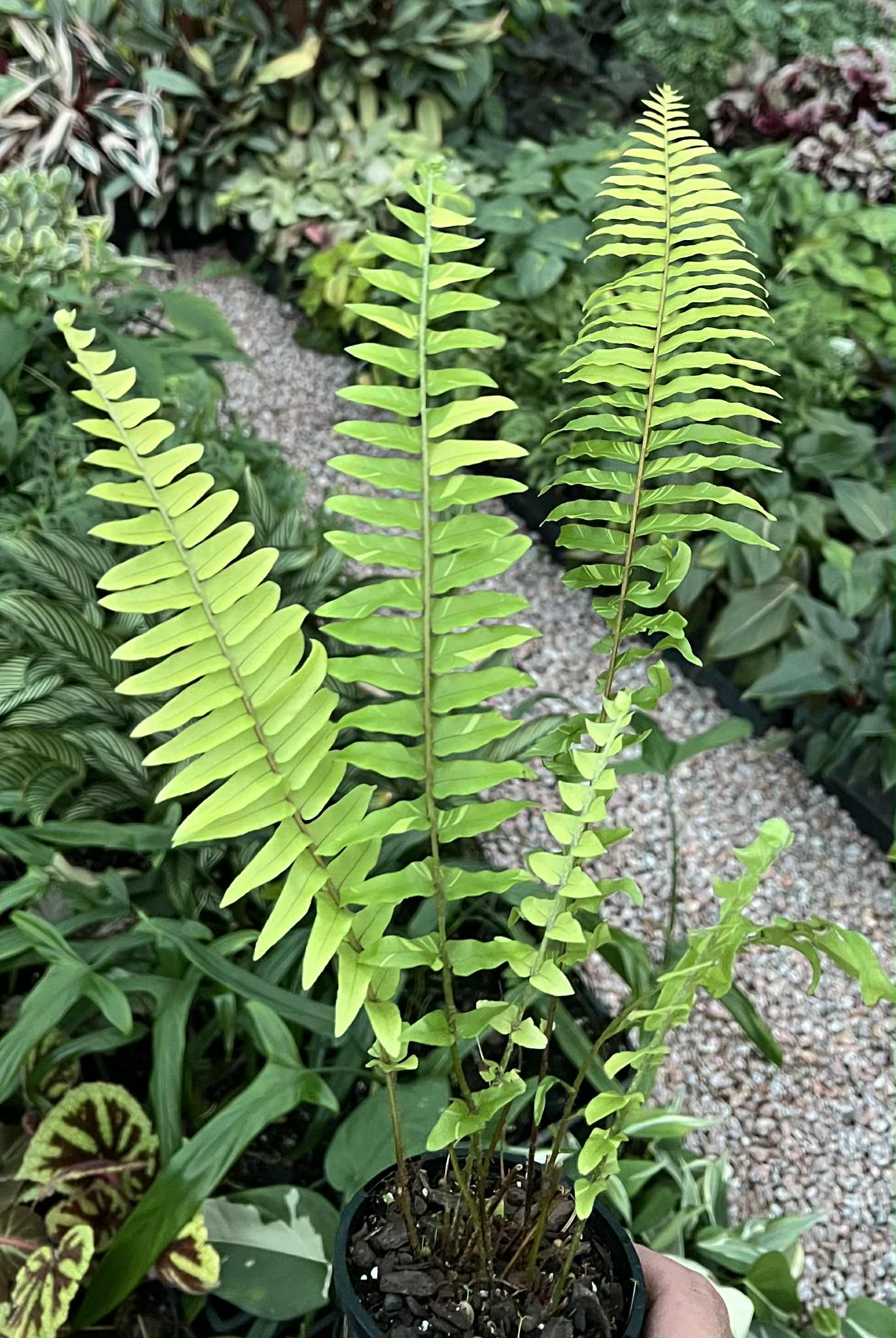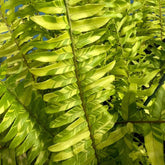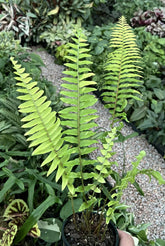Tiger Boston Fern 100mm Pot
- Regular price
-
$35.00 - Regular price
-
- Sale price
-
$35.00
-
Hurry, only 1 item left in stock!
Couldn't load pickup availability
Shipping information
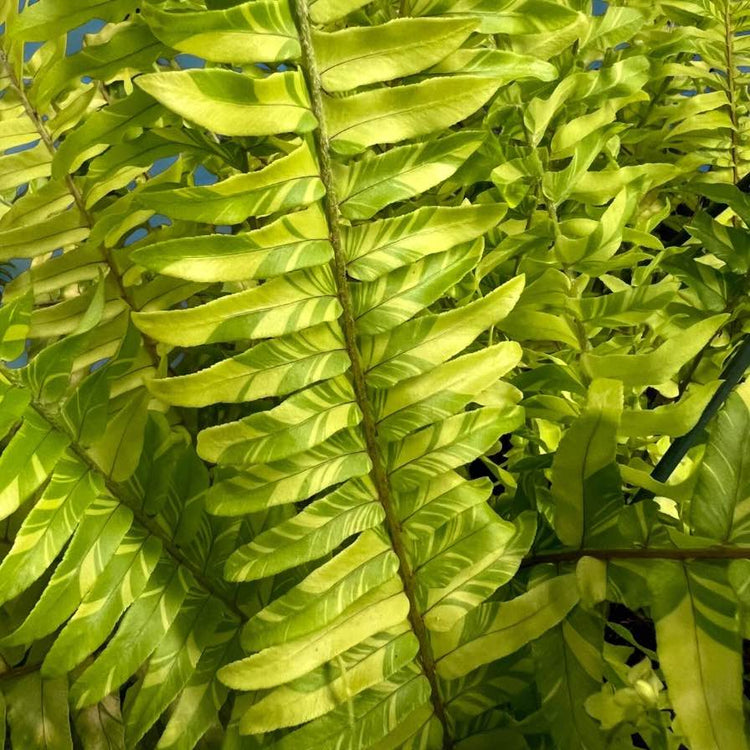
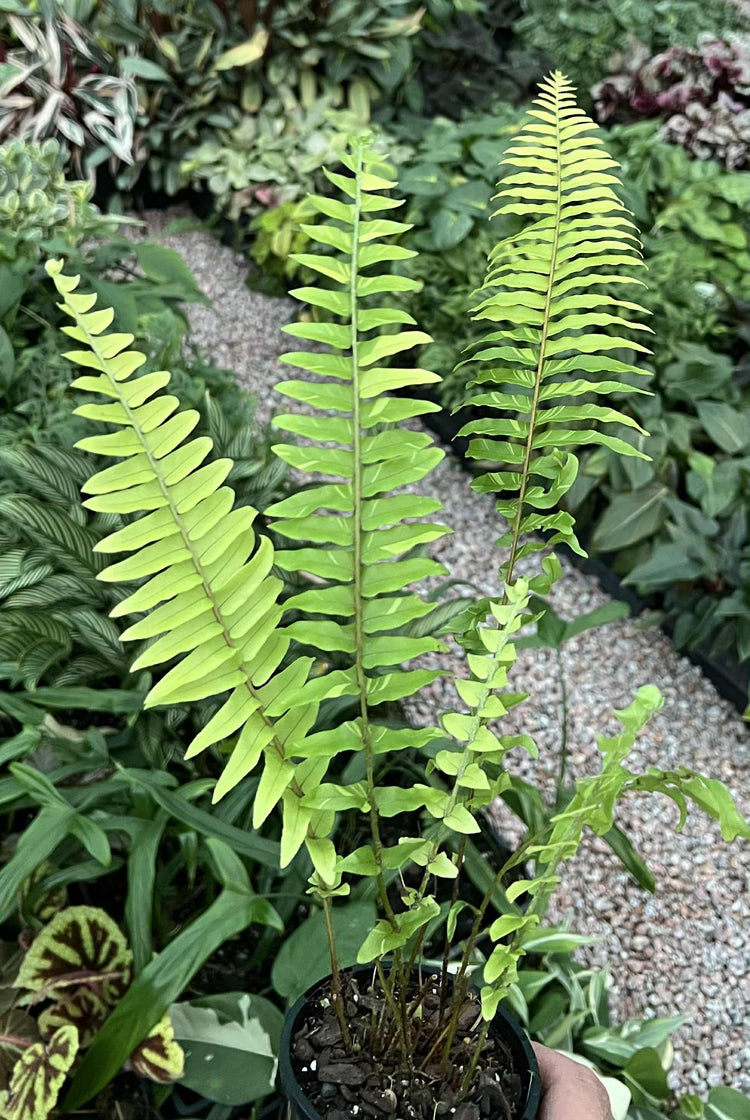
Product Details
Welcome to Plant&Leaf and our range of family grown plants. The first photo serves as a representative display, showcasing the beauty of a mature plant.
All of our plants are grown outdoors in nature and are exposed to the natural elements. Sometimes this means a leaf could have been chewed here and there or have a blemish or two – but we do our best to send the best plants we can on every order.
Growing a Tiger Boston Fern (Nephrolepis exaltata 'Tiger Fern') is relatively straightforward if you follow a few specific care guidelines. This fern is a variegated variety of the classic Boston fern, known for its yellow-green striped fronds, giving it a tiger-like appearance.
🌿 Ideal Growing Conditions
1. Light:
-
Bright, indirect light is ideal.
-
Avoid direct sun, which can scorch the leaves.
-
Can tolerate lower light indoors, but may lose some variegation.
2. Temperature:
-
Prefers 15-24*C
-
Protect from drafts and sudden temperature changes.
-
Not frost-hardy—bring indoors if temperatures 10°C.
3. Humidity:
-
High humidity (50% or more) is key.
-
Mist regularly or use a humidifier, especially in winter.
-
Placing it on a humidity tray (a shallow dish with water and pebbles) also helps.
4. Watering:
-
Keep the soil consistently moist but not soggy.
-
Water when the top inch of soil starts to dry.
-
Use room-temperature, non-chlorinated water if possible.
5. Soil:
-
Use a well-draining potting mix.
-
A fern mix or a blend of peat moss, perlite, and compost is excellent.
🪴 Potting and Fertilizing
1. Potting:
-
Choose a pot with good drainage.
-
Repot every 1–2 years in spring when it becomes root-bound or outgrows its container.
2. Fertilising:
-
Feed monthly during the growing season (spring to early Autumn) with a balanced liquid fertiliser diluted to half strength.
-
Avoid over-fertilizing—it can cause leaf burn.
✂️ Maintenance
-
Prune dead or yellowing fronds regularly to keep it tidy.
-
Remove older fronds from the base to encourage new growth.
🐛 Pests and Problems
-
Watch for spider mites, mealybugs, and scale insects—especially in dry indoor environments.
-
Keep humidity high to discourage pests.
-
Brown tips usually indicate low humidity or inconsistent watering.

